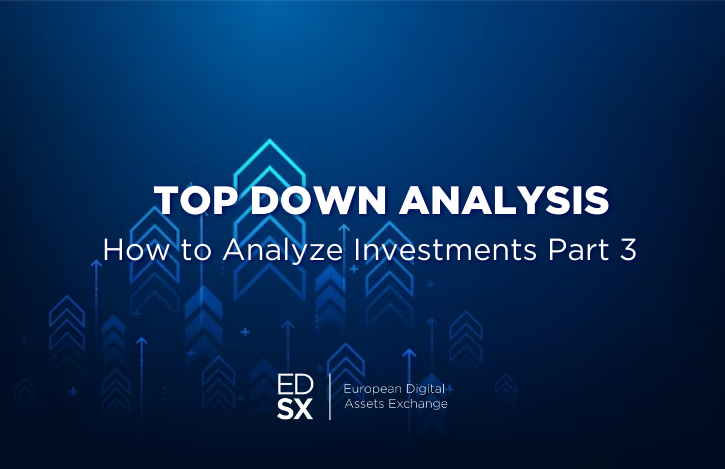Earlier in this series, we explored how to conduct a fundamental analysis; however, this is not the only tool that investors have. As investors seek diverse approaches to portfolio management, top-down investing emerges as a compelling strategy. This method involves analyzing macroeconomic factors before honing in on specific sectors or companies. This article explores the insights from various perspectives to understand the nuances of top-down investing, its advantages, and how it contrasts with other investment strategies.
Understanding Top-Down Investing
Top-down investing prioritizes the analysis of macroeconomic factors such as GDP, employment, taxation, and interest rates. In contrast to bottom-up investing, which starts with a company’s fundamentals, this approach begins with a broad economic overview before progressing to specific sectors or individual companies.
Global Macroeconomic Variables and Market Conditions
Investors using top-down investing initiate their analysis by evaluating global macroeconomic variables and market conditions. The objective is to identify high-performing sectors, industries, or regions and allocate investments accordingly. This initial broad analysis can streamline decision-making but might potentially miss profitable opportunities.
Real-World Example: UBS Group AG’s 2016 CIO Global Forum
Illustrating top-down investing in practice, a notable example is UBS Group AG’s 2016 CIO Global Forum. The forum addressed macroeconomic factors affecting markets, employing a top-down investment strategy. A wealth manager showcased the benefits by identifying consumer discretionary stocks as attractive, considering macroeconomic factors and ultimately investing in Home Depot (HD).
Top-Down Analysis vs. Bottom-Up Analysis
Initiated with macroeconomic indicators and progressively narrowing down to sector and individual firm analysis, top-down analysis provides a distinct approach. In contrast, bottom-up analysis commences with a company’s fundamentals, representing a juxtaposition of these two strategic methodologies.
Benefits of Top-Down Analysis
Delving into the advantages, top-down analysis offers benefits such as risk reduction through extensive research and diversification across sectors and global markets. This strategic approach equips investors to anticipate trends, facilitating adaptability to changing economic conditions. When combined with bottom-up analysis, it forms the bedrock of a comprehensive investment strategy.
Top-Down Investing for Diversification
Positioned as an apt approach for newcomers or those seeking a different perspective, top-down investing unfolds with a broad economic analysis. The process involves drilling down to identify favorable market sectors and meticulously selecting specific stocks or securities. Investors have the flexibility to choose between pre-bundled ETFs or individual countries and industries, considering global economic factors like import/export balances, political volatility, and inflation.
Presenting a unique perspective for navigating the complexities of finance, top-down investing commences with a broad economic analysis. While delivering time-saving and diversification benefits, it is paramount to recognize its limitations. The judicious combination of top-down and bottom-up approaches creates a more holistic investment strategy, leveraging the strengths of both methodologies. As the investment landscape evolves, understanding and adapting these strategies become essential for successful portfolio management.

Based in Zug, the platform is fully compliant with all Swiss laws related to financial intermediaries, banking, anti-money laundering, and organized trading facilities. Among its core values, there are innovative solutions through blockchain technology, which ensures security and liquidity.
EDSX is the first platform in Europe with primary and secondary markets for both institutional and retails. EDSX is a pioneering platform that employs the world’s leading technology to globally list security tokens in both primary and secondary markets, listing digital securities of real financial instruments to the public with a decentralized peer-to-peer exchange. Our goal is to fully engage every aspect of the financial revolution.
Do you have a question for us?
Send your query here:
[email protected]

